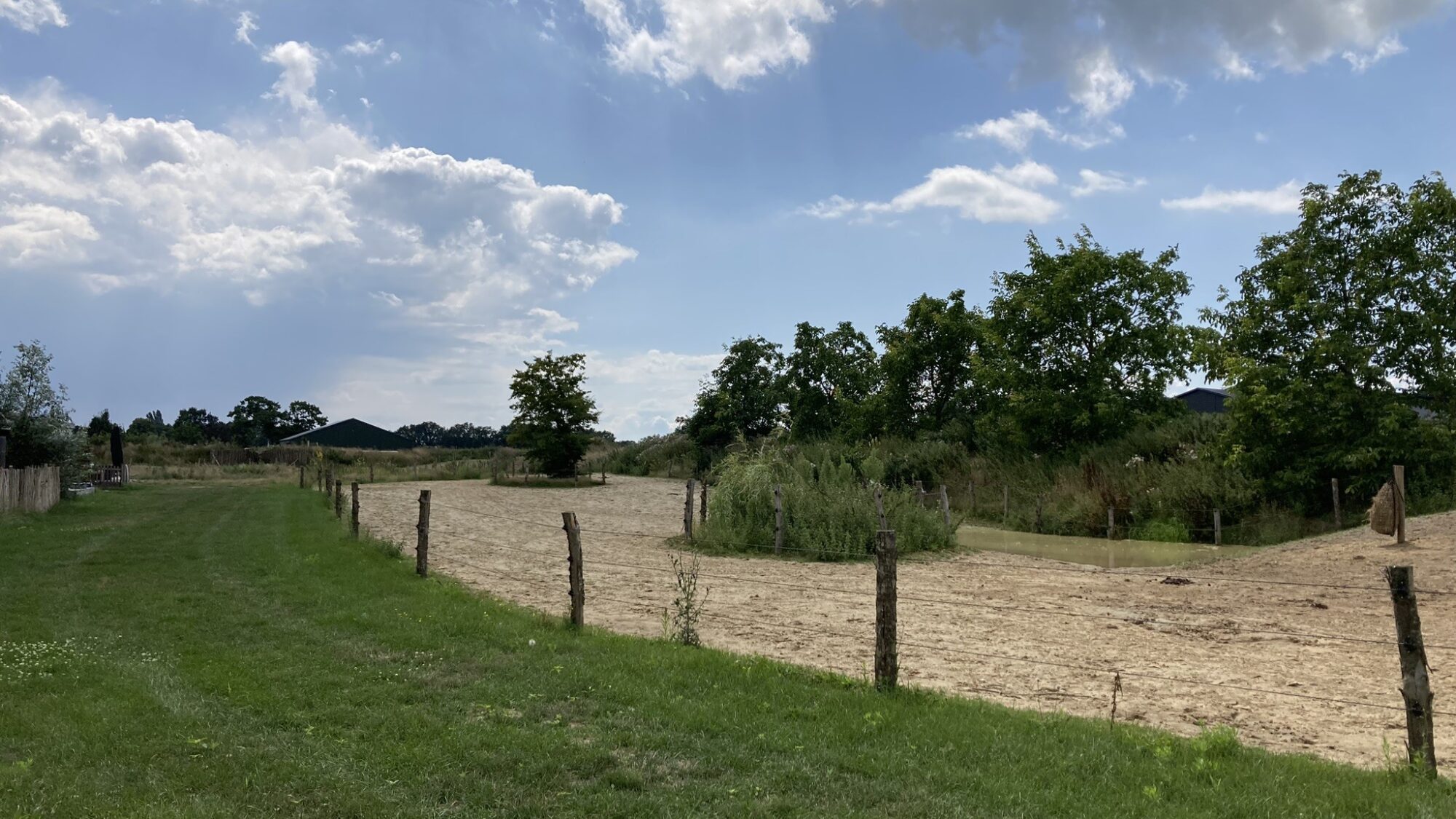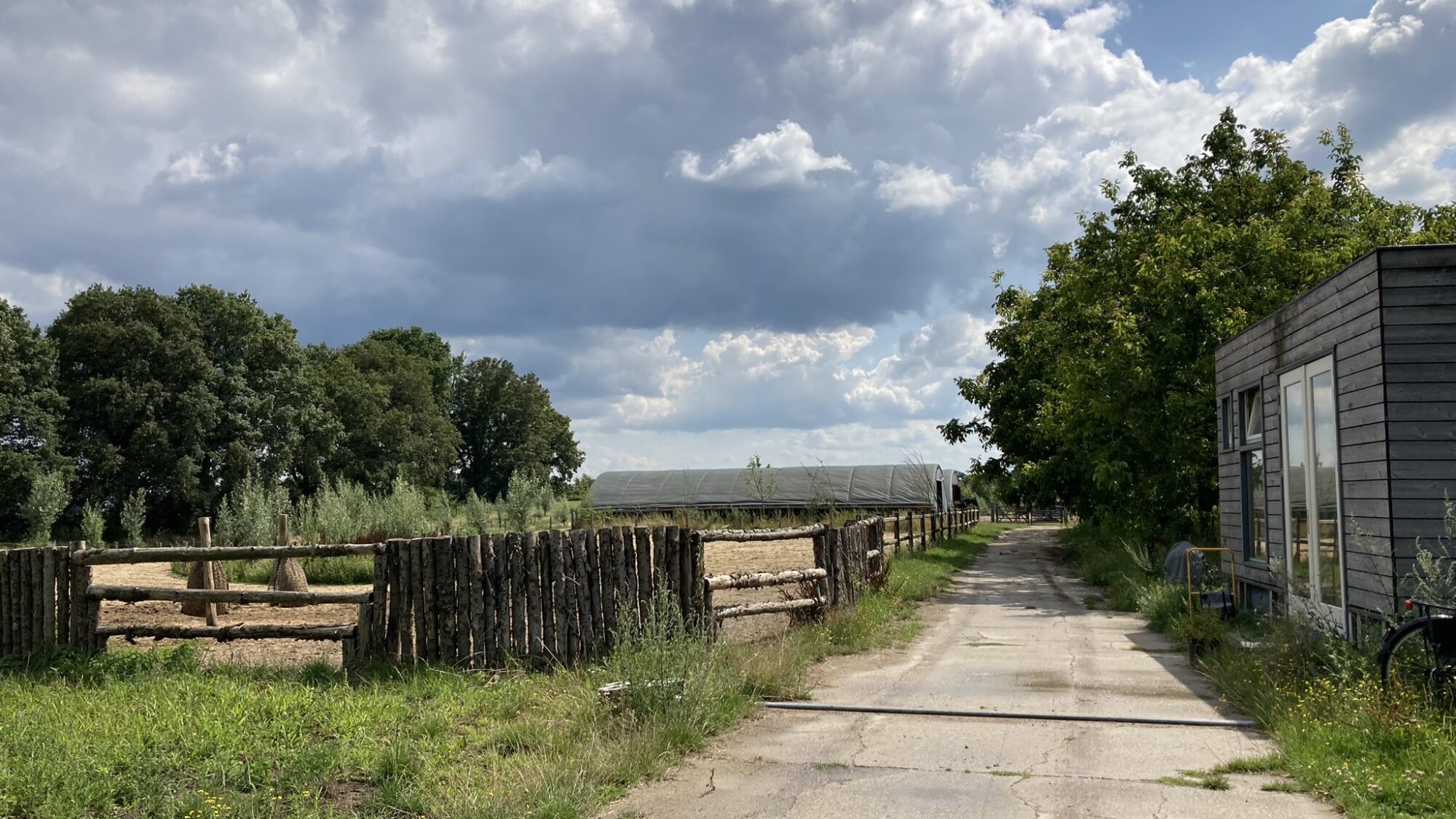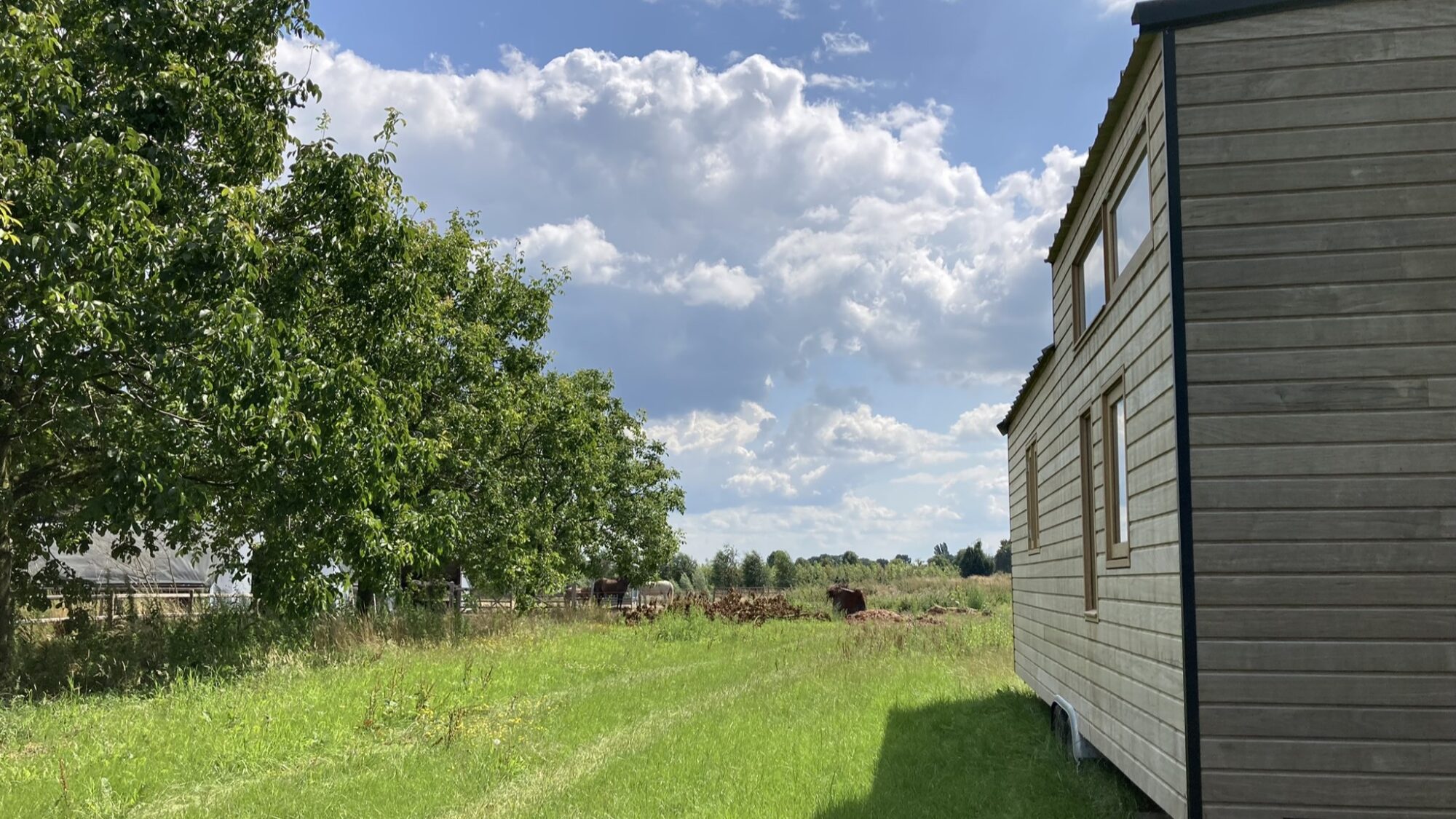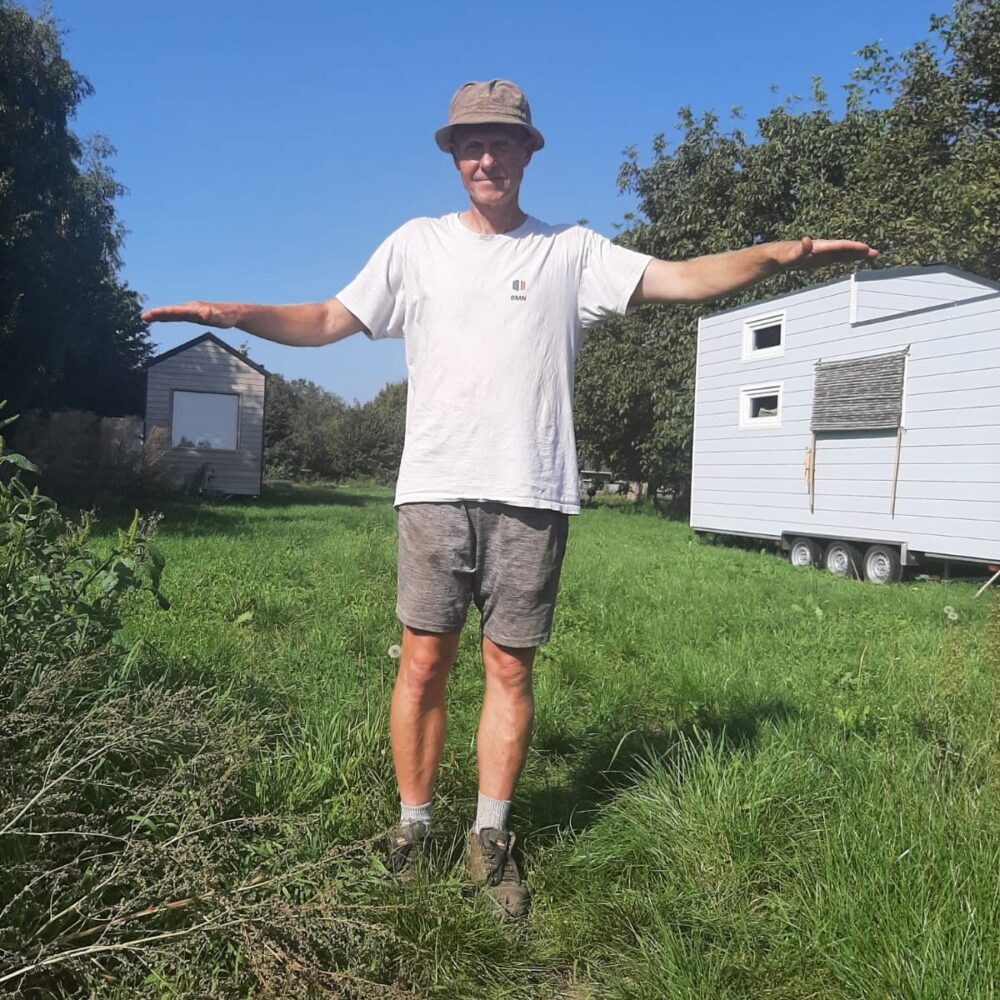It’s a no-brainer: use vacant agricultural buildings (VAB) to build a number of Tiny Houses. After all, many farmers quit without follow-up, and the land that becomes available needs a new purpose. On the other hand, there is a major housing shortage and a transition to a more sustainable way of life. What could be better than placing small, affordable and environmentally friendly houses on those yards, for small households and people with a green heart? The farmers are often willing to do so, but getting a permit is quite a challenge.
Former pig farmer Twan Poels from Venray seems to have managed it: early next year he expects to be able to start installing fifteen houses on his property for permanent residence.
A new plan for the farm
Twan had a pig farm in Venray for no less than thirty years, but now there are horses instead of pigs in the meadows that are part of his domain. Over the past ten years he has started thinking hard about what he would do if he stopped keeping pigs. Various ideas were considered, including an estate with holiday homes. The municipality could not support this and commissioned Twan to come up with a distinctive plan. Tiny Houses had been on his mind for some time, he eventually went through with that plan and now he is happy that the estate idea was not allowed to go ahead. Twan: ‘Tiny Houses are an even better idea. It covers all the problems we currently have in the Netherlands.’

Fifteen houses and a food forest
The municipality has put up restrictions, but Twan can live with it. The Tiny Houses must be beautiful, surprising homes of a maximum of 50 m2 that are completely independent of gas and wood stoves are not permitted. He wants to organize many facilities collectively, preferably together with the residents. There must be a high degree of self-sufficiency on the ground. Consider, for example, a shared vegetable garden, chickens, shared washing machine, shared electric car and a food forest garden. The Tiny Houses have no gates or fences, but people live among fruit, nuts and berries: functional green! People with a passion for gardening or other ideas are given a lot of space, but there is no obligation to participate. He is open to new ideas. Twan: ‘I take all input into account, but ultimately I decide what happens.’
The houses are located along the edge of the field and are fully connected to utilities. Off-grid sounds idealistic, it is not always practical and there is a lot of technology behind it. Everything runs on electricity (heating and cooking), and the intention is to make the site energy neutral by installing solar panels in the barn. However, the power grid is full, so this dream will have to wait before it can become a reality. It is an ideal place for people with their own horse or pony: they can get a spot adjacent to the horse paradise where they can watch their animal walk from the veranda.

An intensive process
He has now been working on his project for almost 5 years and it did not come easy, but the municipality is now cooperating well. In July 2022, the municipality announced that it wanted to carry out five pilot projects with Tiny Houses and Twan’s plan is the first concrete project. The corona pandemic slowed things down considerably, but according to Twan it was also a moment of reflection and a wake-up call for people. In his view, it has only strengthened the case for Tiny Houses. In any case, the municipality is enthusiastic, but it is also complicated for them: the project does not fit within the existing framework. That is why Twan, as he puts it himself, was stuck in a stalemate for two years. The municipality took no step forward. Ultimately, Twan wrote to the mayor and presented his ideas, after which the process gained momentum following a visit from the councilor.
The next bottleneck arose: Twan’s property is located in the countryside, so the province also had to grant permission. Fortunately, he is not simply sidetracked: Twan himself approaches the provincial representative to convince her. More homes are also needed in Limburg, and Twan thinks that his plan can easily be rolled out throughout Limburg. The province representatives came to visit and afterwards issued a positive advice. At the end of April he finally received the green light for his initiative and the process with the municipality could continue. Twan thinks it is a shame that the countryside is so tightly controlled: “That is precisely where the possibilities lie and there is much less resistance than in town cores and edges. You offer retiring farmers an alternative and what would you prefer: a pigsty or some tiny houses as a neighbor?”

Sufficient enthusiasm
Over the years, Twan has formed a waiting list of people who would like to come live at his farm. He didn’t have to do anything for that, the people came automatically. People who report to the municipality are also forwarded to him. Rumors about the plan have been circulating in the municipality for some time. The fact that he appeared on news channel L1 may also play a role. Most of the people on his list come from Venray, but some also come from further away.
Some work has yet to be done before these people can come and live with Twan. Part of the process that Twan must do himself is to conduct an environmental dialogue; visiting the neighbors and local residents to explain what the plans entail. He notices that there is still a lot of ignorance among people about Tiny Houses and their residents, which means that they are considered somewhat less “normal”. Twan finds this quite stigmatizing, but on the other hand also funny. He has now met quite a few prospective residents and knows that this prejudice is not justified. In fact, they are people who perhaps think about things a little more than average and feel that the developments in society no longer fits them. Twan sees it as an important goal to ensure that the image of Tiny House residents comes back into reality.
How to continue
The next step that must now be taken is to change the zoning of the land so that the final application can be made. Twan hopes that this will be possible this year and that the first houses will be installed early next year.
We at TinyFindy sincerely hope so too, and we will follow the project with great interest. It is a very important example project that will be followed elsewhere in Limburg but certainly also in other provinces, in that respect you are really paving the way for fellow farmers, Twan! We wish you the best of luck and thank you for sharing your story!



Leave a Reply